Magic: the Gathering (MTG) is a complex game, including dozens and dozens of keywords across over 30 years of cards. Some keywords show up once, never to be seen again, others appear periodically, dipping in and out of sets as is mechanically sensible.
Then there are evergreen keywords like Flying, which are present in virtually every new set. So what does the Flying keyword do to make it such a prominent inclusion on MTG cards, you ask?
Flying is an evasion keyword in MTG that makes a creature harder to block. If a Flying creature attacks you, you cannot block it except with another Flying creature or one with the Reach keyword. Flying is also among MTG’s oldest keywords, dating back to Alpha, and is found mainly on blue and white creatures.
Pretty straightforward and easy to understand, even if you’re a brand new player. Creatures with Flying are simply out of reach of most others without the keyword, just as a bird in flight would be outside the reach of you or me without a tool.

While a signature ability of MTG that definitely elevates the power level of a creature, cards with Flying aren’t unbeatable. We’ll start by looking at Flying’s rules before moving on to its synergies and best decks in MTG’s most popular format – Commander. By the time we’re done. you’ll know how to use this keyword correctly and counter it when needed.
MTG Flying Rules
Let’s get the stuffy rules portion out of the way first with Flying’s rules entry in the MTG Comprehensive Rules:
702.9. Flying
The MTG Comprehensive Rules, page 142
- 702.9a Flying is an evasion ability.
- 702.9b A creature with flying can’t be blocked except by creatures with flying and/or reach. A creature with flying can block a creature with or without flying. (See rule 509, “Declare Blockers Step,” and rule 702.17, “Reach.”)
- 702.9c Multiple instances of flying on the same creature are redundant.
So only a creature with the Flying or Reach keywords can block a Flying attacker, and there is no “Super Flying” that comes from giving the same creature Flying multiple times. Your creature either flies, or it doesn’t.
From this information, we can already start to paint a picture of how the Flying keyword functions (which is good, as you won’t see reminder text on the card for it outside of beginner-oriented products like core sets. MTG assumes that the average player understands Flying).
Since we now know Flying lets you more easily strike at your opponents’ life totals, you might be wondering if you can give your nonflying creatures the gift of flight, and the good news is that you can! There are two common methods you can utilize to do this.
The first is to use the effect of another card to simply give one or more creatures the Flying keyword.
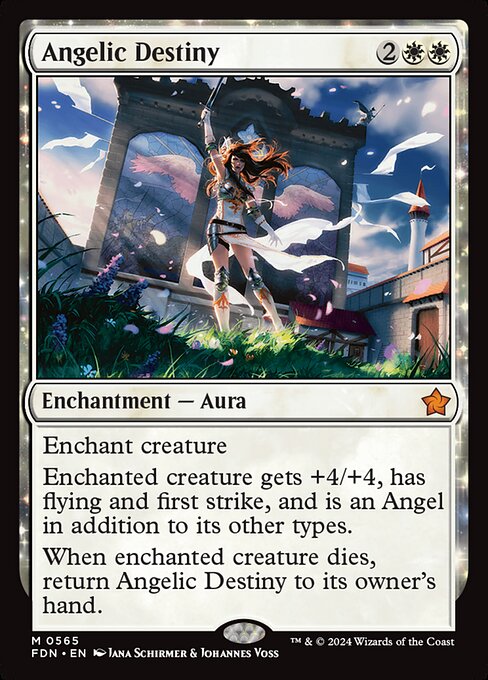
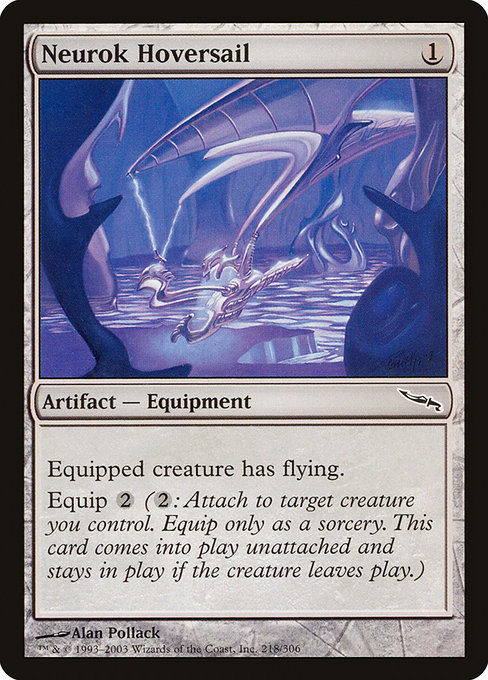
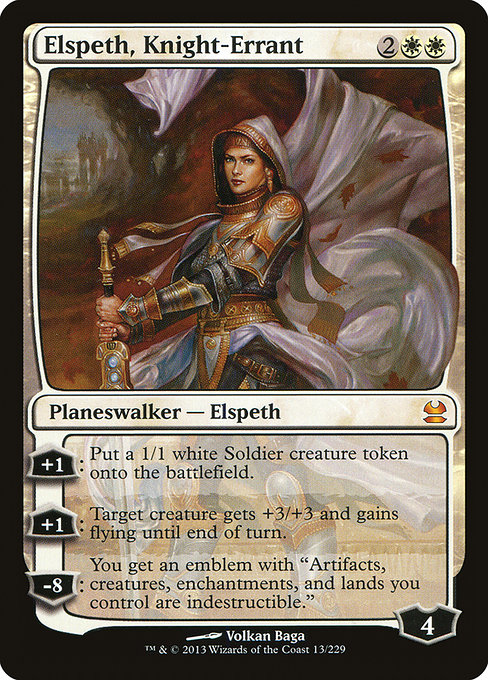

There’s no shortage of cards like Angelic Destiny, Elspeth, Knight-Errant, and Wonder, each of which is designed to provide either temporary or permanent access to the Flying keyword for your creatures. While permanent addition of this keyword tends to be better, don’t underestimate a one-turn effect – sometimes that’s all you need to end the game!
The other, more recently introduced, way to get your creatures in the air is through the use of Flying Counters.
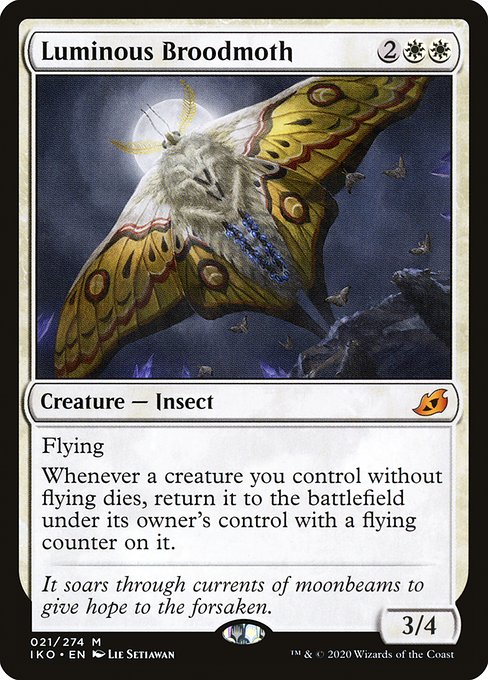
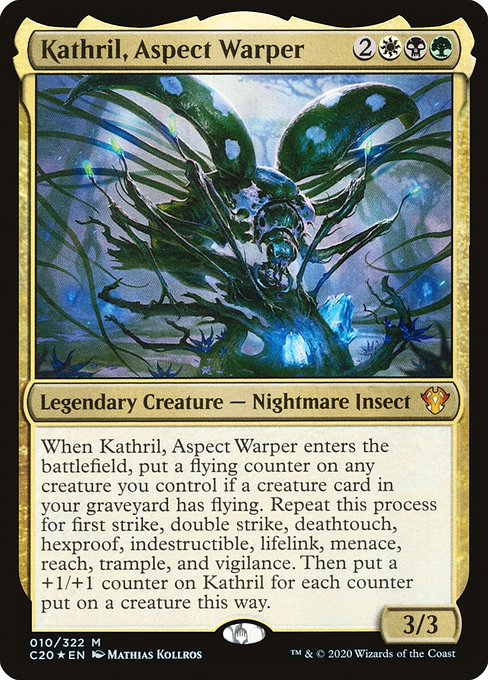
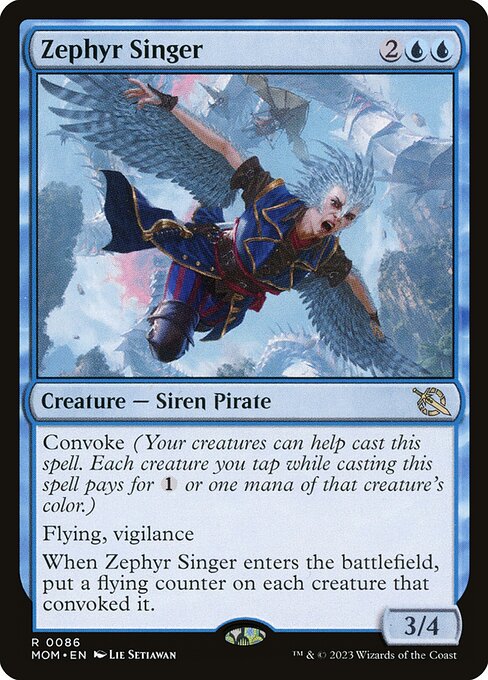
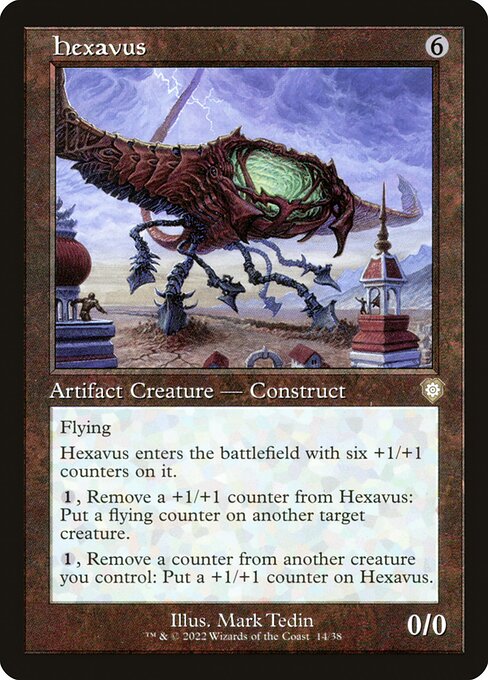
Introduced in Ikoria: Lair of the Behemoths, these markers aren’t tied to another card – they’re simply placed on a creature. As long as that creature has the Flying counter, it’ll have the Flying ability. If it loses the counter somehow, it loses the power, too.
Flying MTG Gameplay Examples
To best understand the Flying keyword, let’s take a closer look at how it applies in MTG gameplay. For our first example, let’s say we control Preening Champion, a Flying creature. Our opponent only controls an Etched Familiar.
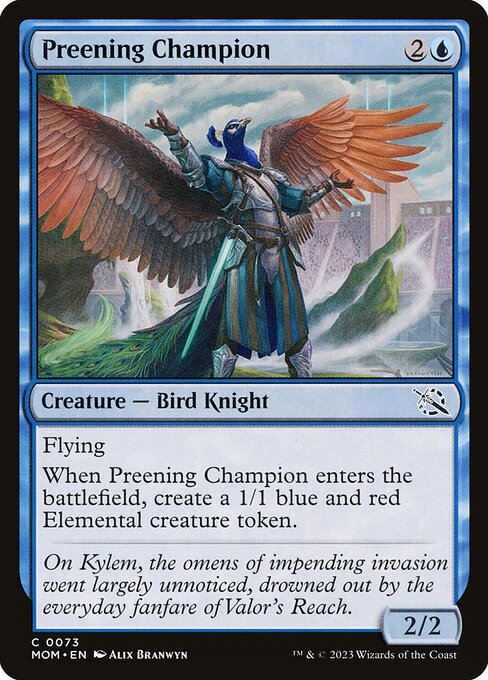
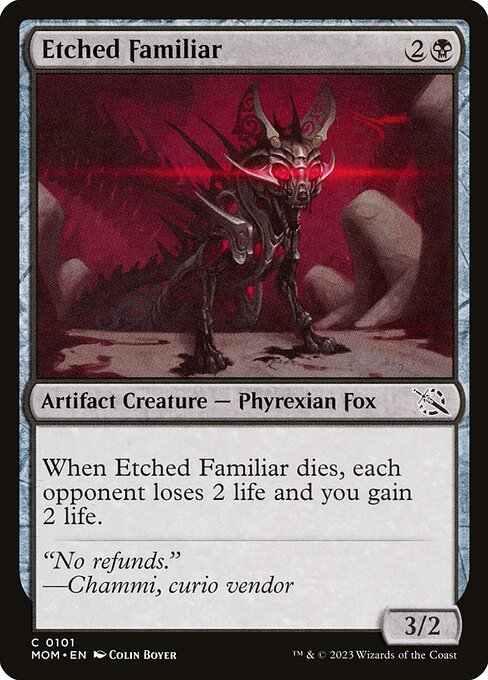
In this case, I can attack safely with Preening Champion. It has the Flying keyword, while the opponent’s creature does not, so it can’t block any Flying creatures.
Interactions like this could quickly turn a game in our favor over time. An opponent who can’t handle creatures with Flying has an exploitable vulnerability, so unless they find a way to remove Preening Champion, they’re under a deadly clock.
However, let’s imagine our opponent now casts Flitting Guerilla, which does have the Flying ability.

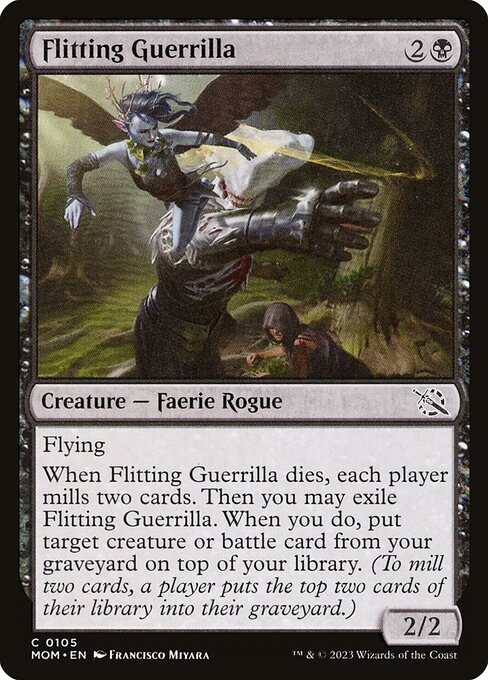
In that case, our Preening Champion can’t attack freely anymore. The opponent could block it with Flitting Guerilla and kill our attacker. That’s not a trade we necessarily want to make, depending on the board state. The reverse also applies; when Flitting Guerilla attacks us, we must either block it with a Flying creature or suffer the damage.
After learning how well fliers attack. newer players often want to know if Flying creatures can block creatures on the ground in Magic. As it happens, they can! The Flying keyword ability only applies when attacking; it has no rules to change how Flying creatures may block.
This makes fliers versatile creatures in combat compared to their non-Flying counterparts, excellent for both offense and defense as the situation requires.
Going back to our creatures above, suppose the Etched Familiar attacks us. We can choose to block it with our Flying Preening Champion or block with a creature that doesn’t have Flying, like Balduvian Atrocity.

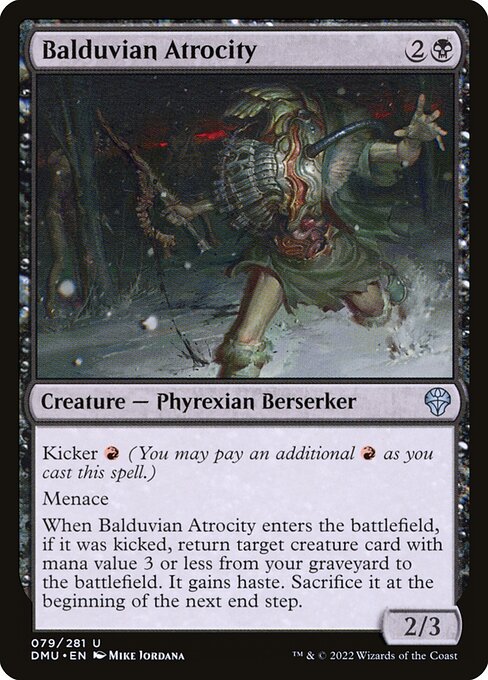

There’s not necessarily a universally right answer for how to block in a scenario like this; you’ll have to make the best decision based on the board state and information you have. That said, the more options you have, the better you can respond to your opponents’ plays.
Speaking of the information you might or might not have, let’s talk about what happens if you give a creature Flying during combat. As with many things in MTG, timing is everything, but for simplicity there are two major points that really matter for this discussion – giving a creature Flying before blockers are declared, and after blockers are declared.
As an example, let’s say I’m attacking my opponent with a creature without Flying, like Alabaster Host Sanctifier. My opponent only controls a Redcap Heelslasher, another non-flier. My opponent is tapped out, but I have an Aerial Boost in my hand.
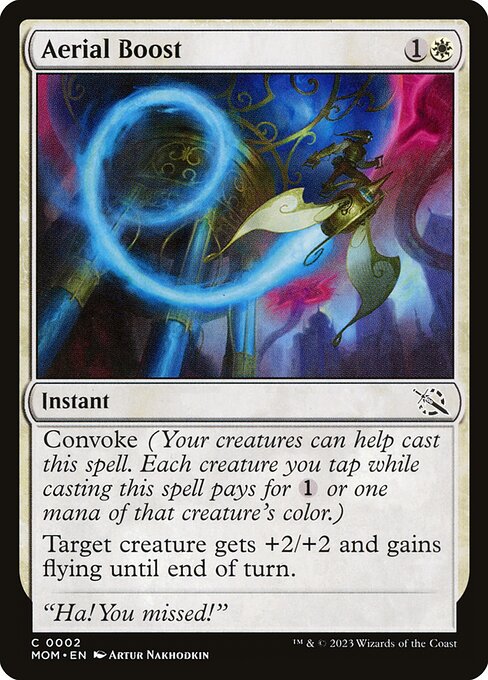
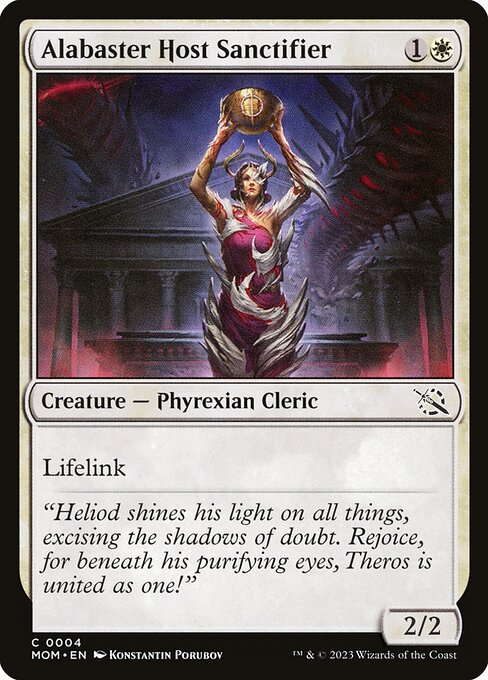
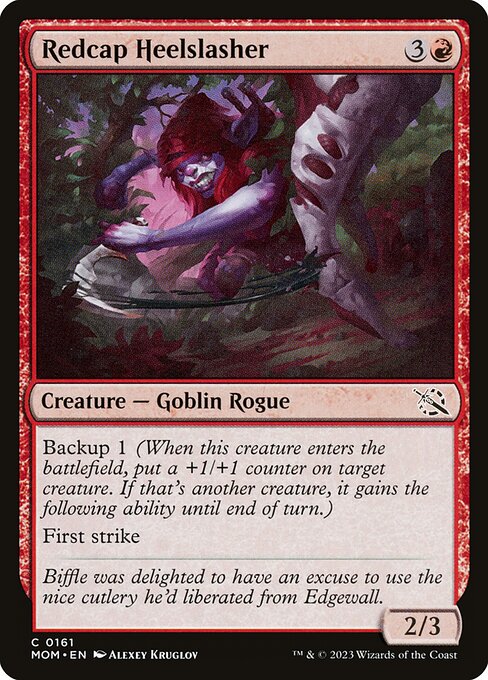
If I cast Aerial Boost during an earlier point in the turn, or during combat before my opponent has a chance to assign blockers, they won’t be able to block my Alabaster Host Sanctifier, and will take 4 damage as a result. Plus, I’ll gain 4 life through my creature’s Lifelink ability.
Should I choose to hold Aerial Boost until after the declare blockers step, my opponent is very likely to block my Alabaster Host Sanctifier with their Redcap Heelslasher, as it would ordinarily survive the damage from my creature unscathed thanks to its First Strike ability (and even without First Strike, it has more than enough toughness to boot).
After they block, I then cast Aerial Boost, which gives my Alabaster Host Sanctifier the Flying ability, so what happens? Well, Redcap Heelslasher already blocked it. Nothing changes in terms of blockers – I don’t get to retroactively fly over my opponent’s creature at this point, so they won’t take any damage.
While I missed out on dealing my opponent 4 damage because I waited too long to give my creature flying, the good news is that I will successfully kill their creature in combat thanks to the +2/+2 bonus to Alabaster Host Sanctifier’s power and toughness, even factoring in Redcap Heelslasher hitting my creature first with First Strike.
I also still gain the 4 life I would have gotten from hitting them directly, so I actually come out ahead in the long run here (unless my opponent had 4 or less life). One of the perks of playing a combat trick that does two things – it gives you multiple ways to interact with the board.
Strengths And Weaknesses Of Flying In MTG
Flying is a potent evasion ability for creatures, allowing you to limit how many creatures your opponents can block with as you continually attack and whittle down their life total. It has received plenty of support, synergies, and interactions over the last 3 decades, and more cards with the ability are printed in new sets.
While we’ve thoroughly explained the theory of what makes Flying creatures so powerful, it turns out that they’ve also proven to be quite strong in a variety of formats with a wide range of power levels.
In sealed and draft events, where power levels are typically at their lowest for organized play, you may have heard of the B.R.E.A.D. philosophy for evaluating cards (Bombs, Removal, Evasion, Aggro, and Duds).
Flying is typically the most common means of a card falling into the Evasion category, and in an environment where efficient removal is typically hard to come by, it makes evasive creatures like fliers extraordinarily dangerous if you can fight your way to at least an even board state with your opponent.
Formats like Legacy and Modern, which feature many of Magic’s most powerful cards, have a number of fliers that see consistent play as well. Fliers like the transformed Delver of Secrets and Ledger Shredder ensure you have a steady clock of hard-to-answer damage, and massive fliers like Murktide Regent that come down for cheap frequently end games by themselves with a few counterspells to back them up.
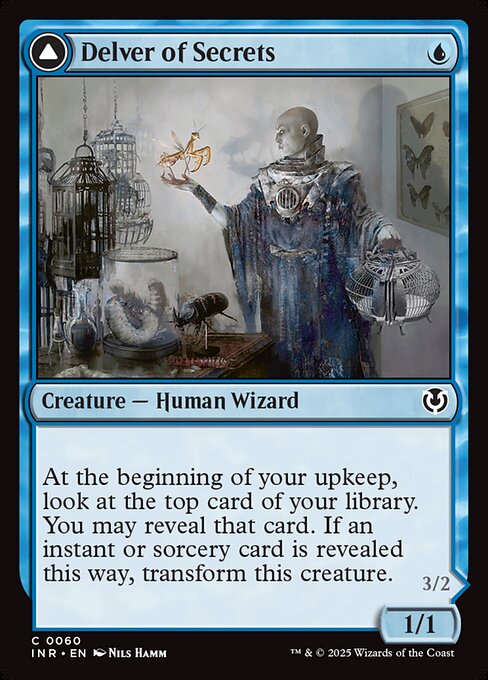
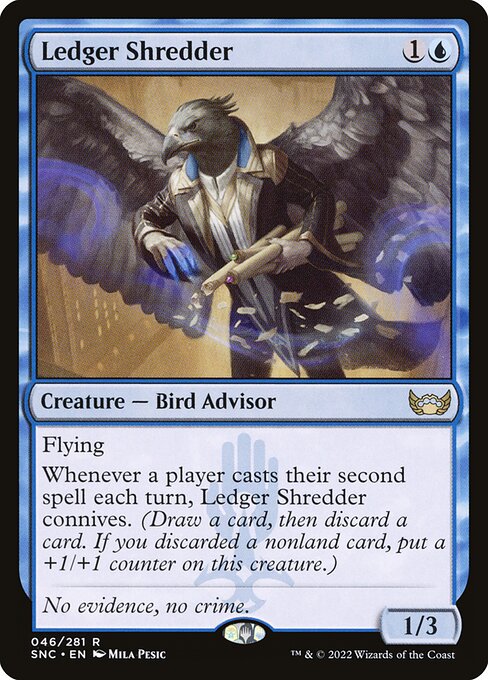
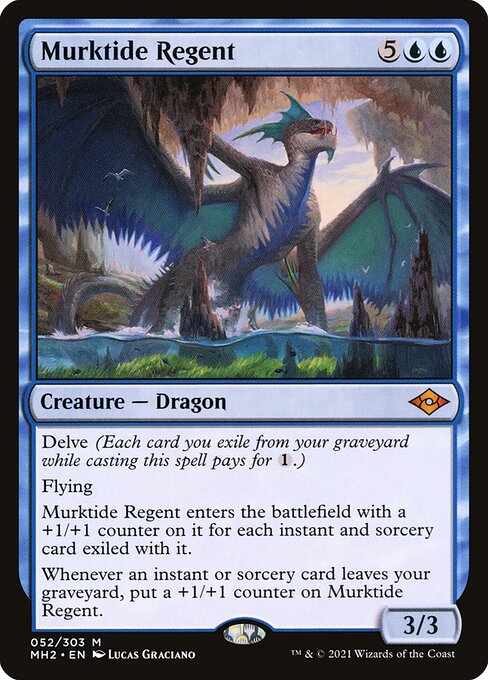

Combo decks also enjoy using Flying creatures since this keyword is often an automatic addition to an already powerful card. Reanimator mainstays like Griselbrand and Archon of Cruelty utilize the Flying ability to attack opponents on multiple axes, generating huge advantages for you while rapidly reducing an opposing life total.
However, the Flying keyword is not invincible. While many prominent removal spells will hit any creature (fliers in particular are lightning rods for these), there are also a significant number that specifically target fliers, particularly in Green.
Cards like Carnivorous Canopy simply offer this removal as part of a toolbox, but there have been a number of creative ways to hamper fliers printed over the years.
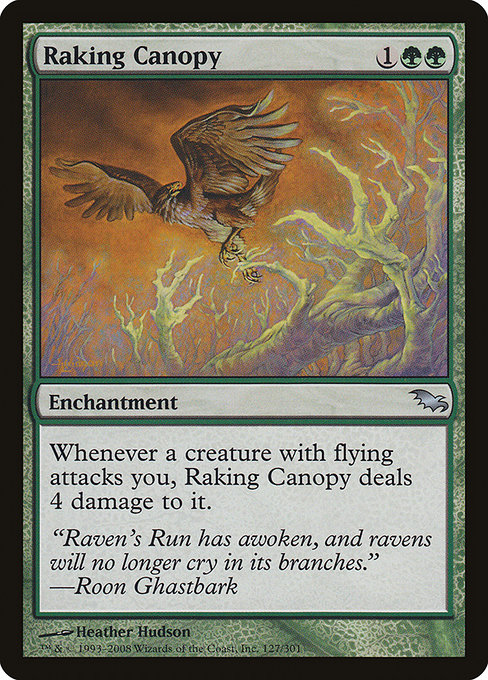
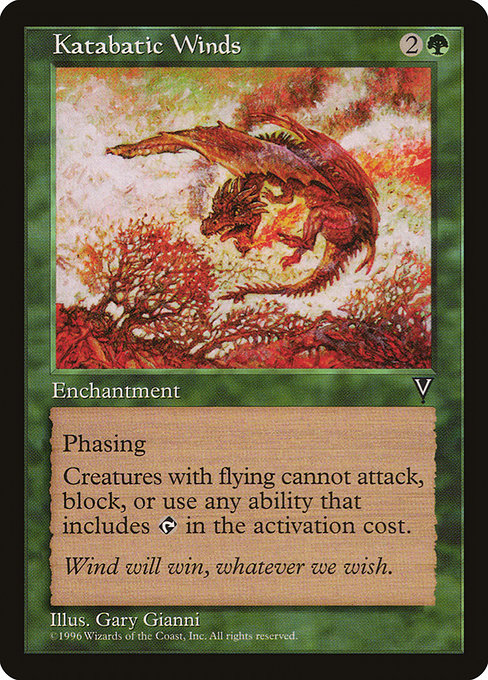
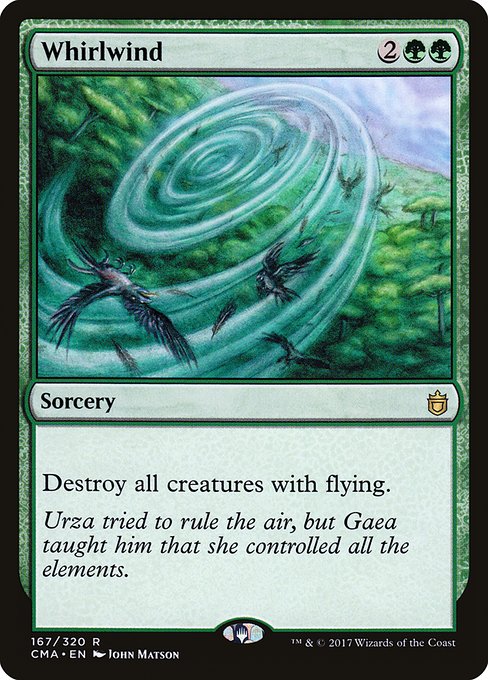
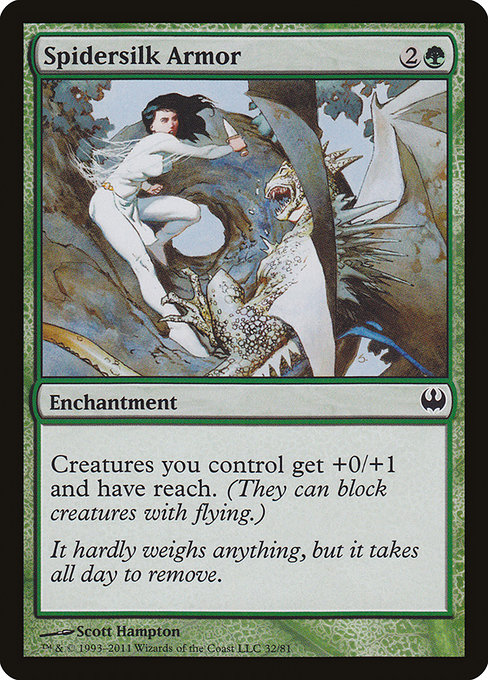
Reach creatures are also prominent in Green, and are frequently printed with Deathtouch as well, meaning even a single point of damage will knock your flier out of the sky, no questions asked. Trades with these creatures in combat will often feel pretty bad, so finding a way around them is usually the better option if you can do so.
Flying Vs. Keywords: Synergies and Counters
As an old and famous ability, Flying has had ample time to pick up a few synergies with other keywords, and there are a few that can also really get in the way of fliers. Sometimes a keyword can even do both! Let’s check out the most common examples.
Flying Vs. Reach
We’ve touched on this already, but Reach is a particular keyword that counters the Flying ability. A creature with the Reach keyword can block Flying creatures even though it isn’t Flying. However, the Reach keyword is purely defensive. You don’t need a special card to block Reach cards.
This effect dates back to Alpha, but wasn’t an official keyword until Future Sight. Almost all Spiders have Reach, dating all the way back to the original Giant Spider, but it can often be found on Archers and Treefolk as well.
Plenty of other miscellaneous creatures receive this keyword too, so keep an eye out for them during gameplay so you don’t fly into a trap.
Flying Vs. Double Strike
Double Strike is deadly and lets a creature deal First Strike and standard combat damage. This ability synergizes quite well with fliers by halving the clock they are putting opponents under while also making them a nightmare to block effectively, as First Strike damage occurs before normal combat damage will ever touch your creature.
Cards that can spread this ability to multiple creatures will often end the game on the turn they’re played with fliers, as Dragons led by Atarka, World Render or a board boosted by Flying Crane Technique have proven time and again.

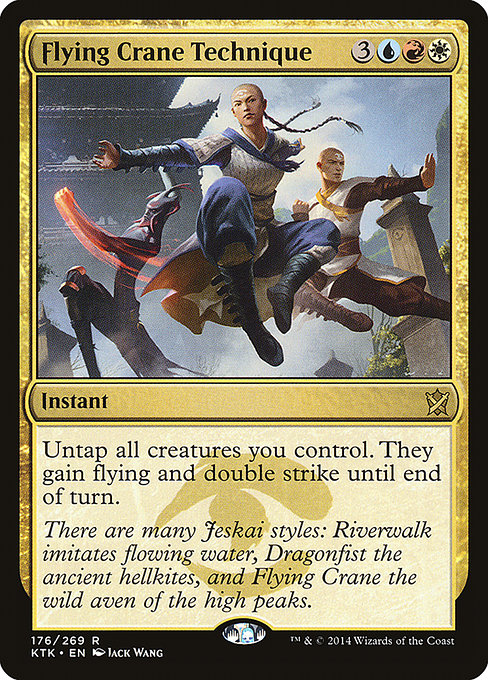
While a definite boon on offense, a creature with Double Strike that can block Flying is also a dangerous defense against fliers. Flying creatures often have low toughness, letting a Double Strike creature pick them off with First Strike damage before taking damage itself.
The Flying Crane Technique from earlier is a great example of this in action. While an extremely expensive combat trick, an all-out attack from your fliers can be completely routed with ease if there are enough creatures on your opponent’s board to use it with, and even potentially leave you quite vulnerable on the crackback.
Flying Vs. Vigilance
A creature with Vigilance doesn’t tap whenever it attacks, letting it attack and block in the same turn cycle. Combined with Flying, you now have a perfect combination of keywords, as they allow a creature to attack evasively and defend against other attackers in the air or on the ground. That’s a big part of what makes a card like Atraxa, Grand Unifier such a headache to deal with.
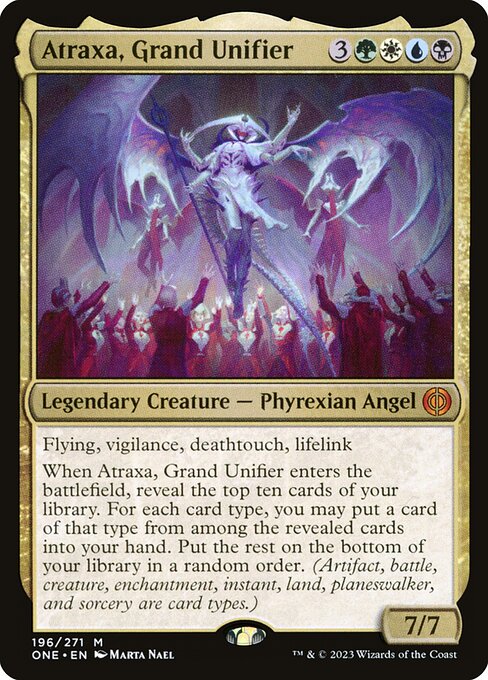
Peak versatility that demands an answer, or you’ll simply take over the game in most scenarios. What’s not to love?
Flying Vs. Deathtouch
Deathtouch is a potent ability that lets any damage a creature deals be lethal to other creatures, regardless of their toughness. You don’t want to recklessly block a Deathtouch creature or send your attackers to fight one and the same will be true for your opponent, making a creature with both Flying and Deathtouch like Baleful Strix a serious nuisance.
As was mentioned earlier, Deathtouch is also frequently paired with Reach, making creatures with both abilities a significant deterrent for even the mightiest fliers. Finding ways around rather than through cards like Hoarding Recluse or Ruins Recluse is often preferable if you have a really good flier on the board.
Can Defenders Block Flying In MTG?
Defenders cannot block Flying by default; the Defender ability only prevents a creature from attacking. Although many Defenders have high toughness, they’re not inherently better blockers. So, they can’t stop Flying creatures unless they have other abilities.
For example, Academy Wall doesn’t have Flying or Reach, so it can’t help us against Flying attackers. But a card with Flying or Reach in addition to Defender absolutely can.
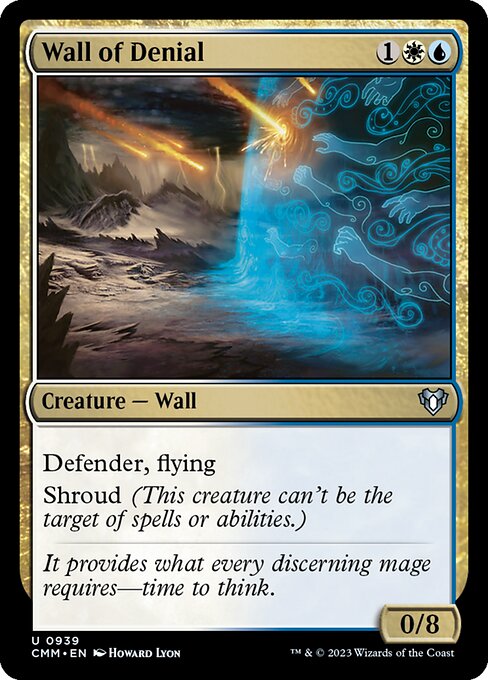

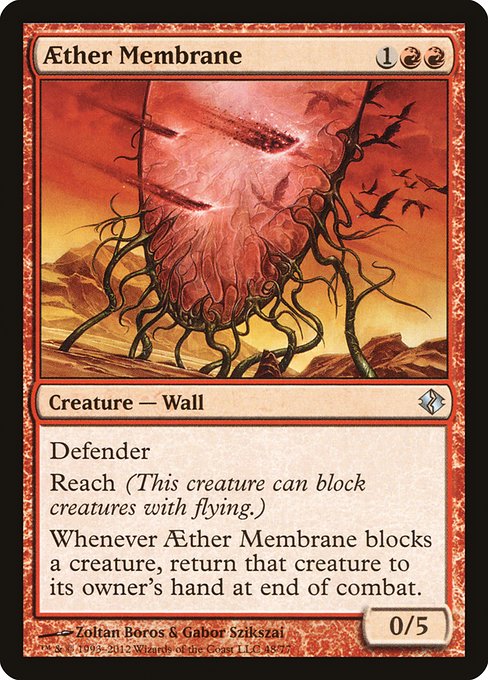
Let’s reiterate. The defender keyword only stops a creature from attacking. It says nothing about which ways or what a creature should block. Because of this, Defender and Flying don’t counter each other. Instead, they’re vastly different keywords that don’t share synergies or weaknesses.
Can You Fight Flying MTG Creatures?
Fight in MTG is an ability that causes two creatures to deal damage equal to their power to each other. Because this wording is not tied to combat and does not contain other restrictions, you can fight Flying creatures in MTG.
Let’s look at an example. My opponent controls Sunstreak Phoenix, a Flying creature. However, this card has high power but low toughness. If I can’t remove it, it’ll kill me in only a few turns.
Fortunately, I control Defiler of Faith and have a copy of Bushwhack in my hand. Defiler of Faith has fantastic stats but doesn’t have Flying or Reach. Usually, it wouldn’t be much help against Sunstreak Phoenix. But if I cast Bushwhack, I am allowed to select Defiler of Faith and the Flying creature, Sunstreak Phoenix and have them fight.
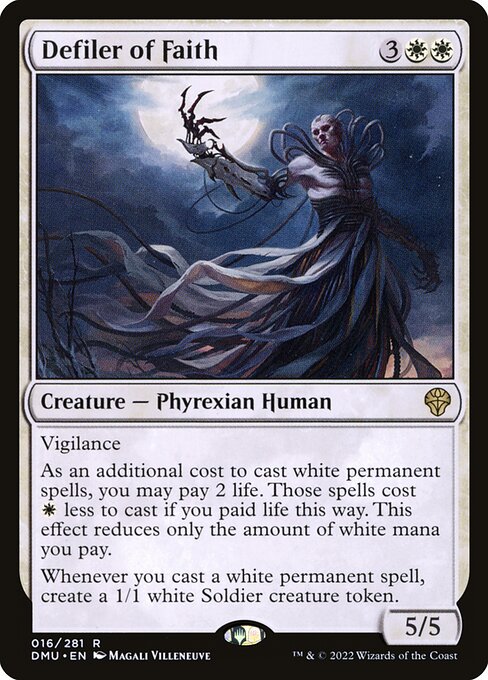
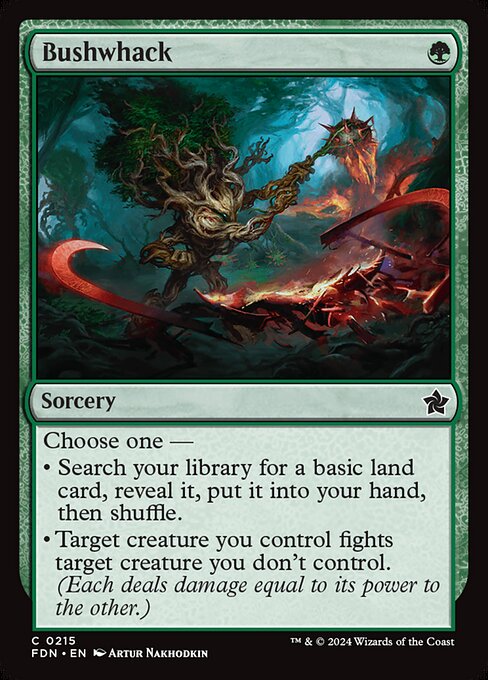
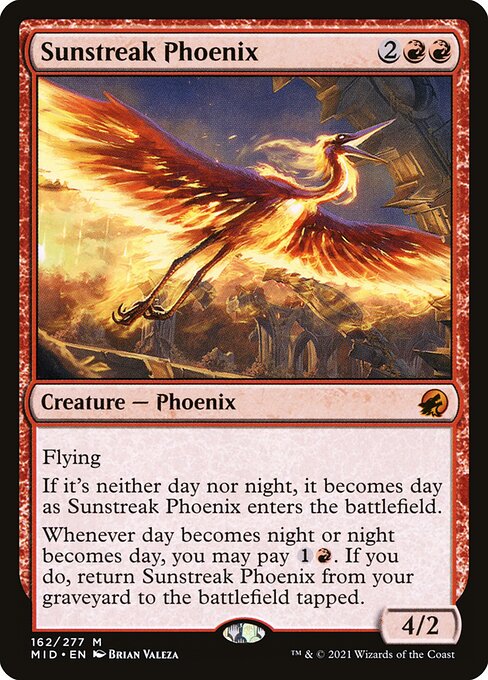
This way, I can destroy the Sunstreak Phoenix and keep the Defiler of Faith intact. Because fighting does not count as combat, I can even send Defiler of Faith to attack my opponent and start turning the game’s tide (though I’ll still have 4 damage marked on my creature from the fight, so I’ll probably hold it back if there’s a blocker, as 1 more point of damage for the rest of the turn will kill it).
MTG Flying Commander Decks
Since Flying is so abundant, it’s no surprise many cards with the keyword find their way into Commander. However, only a select few make this evasion keyword essential to their game plan.
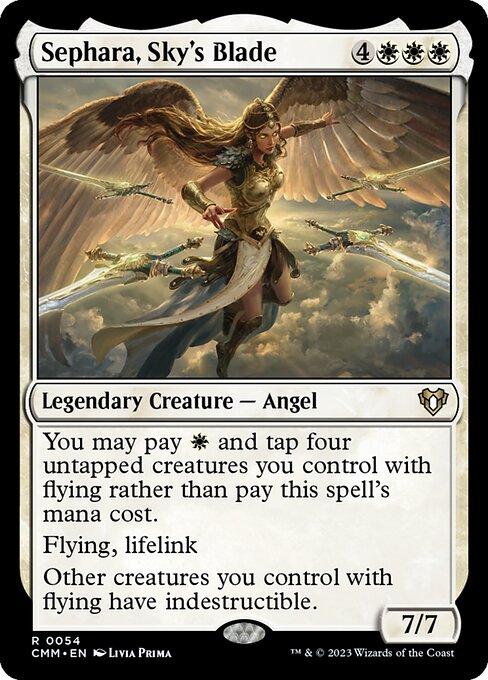
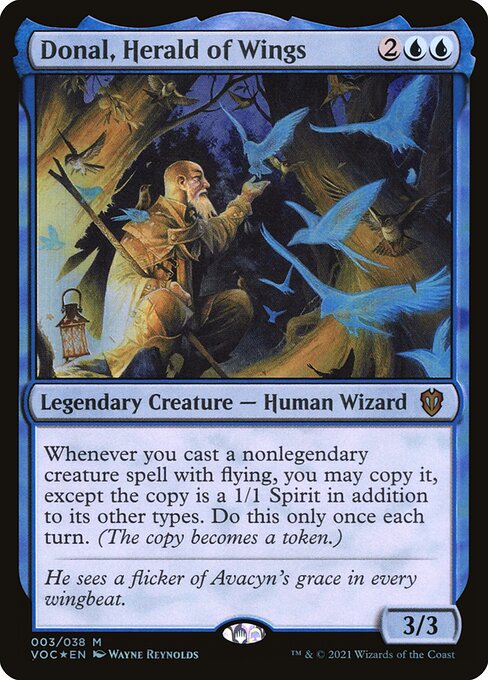
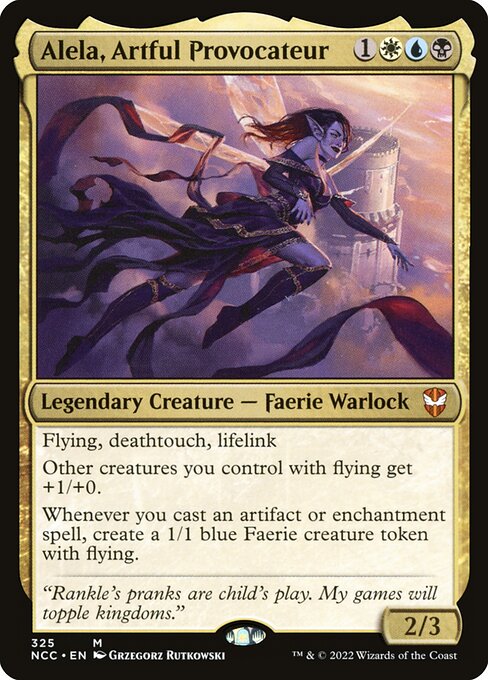
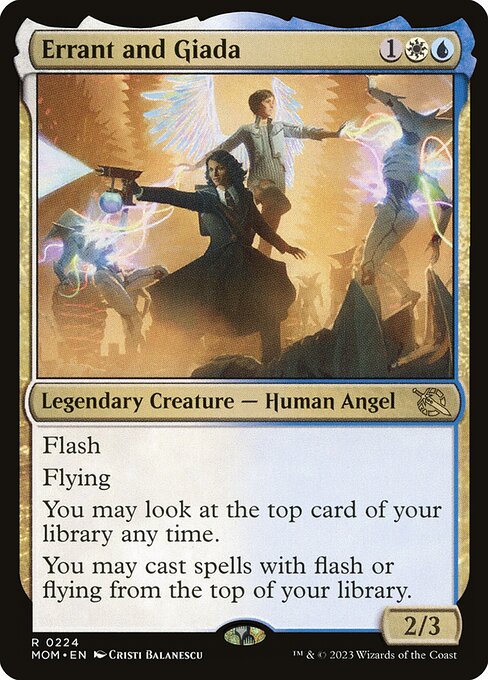
Sephara, Sky’s Blade is an excellent commander for a mono-White focused flying deck. It makes all your fliers indestructible, making them significantly harder to take off the board, and despite costing 7, comes with an extremely convenient casting discount if you can get 4 other fliers into play ahead of it.
Fortunately, that’s not too hard through the use of tokens or mass reanimation spells like Ascend From Avernus, so you probably won’t be paying 7 mana until Sephara’s been removed 3 times and the commander tax forces you to.
Donal, Herald of Wings favors a more swarm and value focused approach, allowing you to make copies of every nonlegendary flier you cast (though the copies become 1/1s). This lets you stack bodies and enter the battlefield (ETB) effects quite quickly while giving you access to counterspells to protect against board wipes.
While 1/1s will take some time to whittle down life totals, cards like Favorable Winds and Sprite Noble can add significant power to your board for very little mana, turning a bunch of unassuming creatures into a dominant board.
Alela, Artful Provacateur adds extra value to your artifact and enchantment spells by giving you 1/1 fliers for free with every cast – except they’re actually 2/1s because of the constant buff it also gives to other fliers! Being a Faerie, you also have access to a lot of synergies with that creature type, most of which also fly themselves.
Errant and Giada is a commander I’ve started seeing in our playgroup, and the value it can stack up over time is absolutely absurd. Being able to cast spells from the top of your library is already like getting to draw free cards, and flashing fliers in at the end of an opponent’s turn (assuming they have both Flying and Flash) is like giving your fliers haste, as they’ll be allowed to attack on your upcoming turn.
Factor in that blue has a ton of ways to draw cards and manipulate the top of its library, and you have the groundwork for a strong value engine.
While these are among the best commanders that directly support flying, plenty of others like Kaalia of the Vast, The Ur-Dragon, Giada, Font of Hope, and Miirym, Sentinel Wyrm also make efficient use of Flying because the creatures they support all have it!
The same is true of many commanders I haven’t mentioned as well – take some time to look at different legendary creatures and creature types, and you’ll almost certainly find a Flying-based strategy that will make waves at your next Commander night.
Conclusion
To conclude, the Flying keyword is a mainstay of MTG and for good reason. This beautifully straightforward ability makes a creature harder to block, but not in an unfair or overpowered way due to the number of creatures and removal spells that can address a flying creature.
If you’re new to the game and haven’t had a chance to take to the skies against your opponents, try playing a deck with these versatile creatures to see what having the high ground is all about. Odds are, you won’t be disappointed.
Other MTG Posts You’ll Love:
- Best Mono White Lands For Commander
- Best Blink Commanders
- How To Build A Commander Deck
- Best Place To Buy MTG Cards
- MTG Green Board Wipes For Commander
- Spelltable MTG Setup
Braden is a founder of Assorted Meeples and has been a gamer & writer with a vivid imagination all his life. Don’t believe us? Check out his excitement when meeting Goosebumps author R.L. Stine as a kid! An avid Magic: The Gathering spellslinger for over 15 years, you can always convince him to shuffle up for a game (or three!) of Commander.
